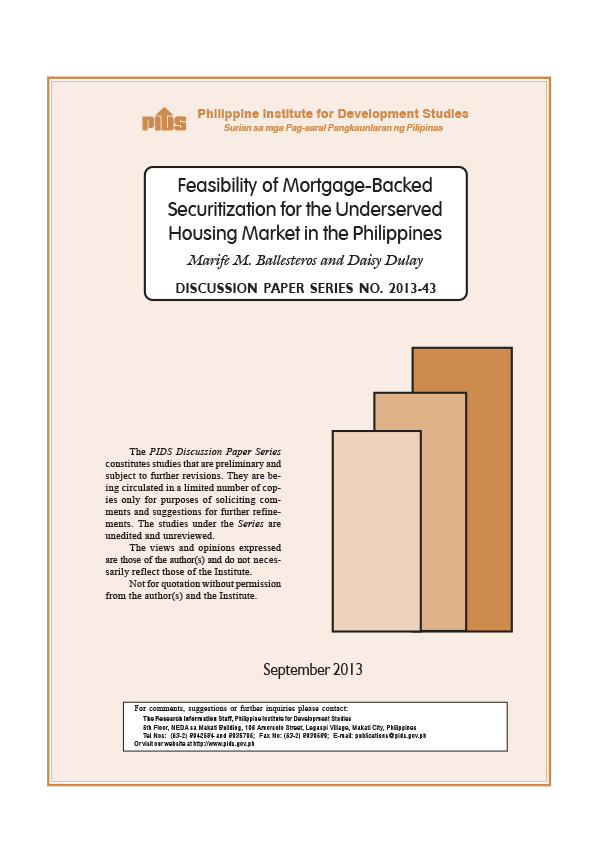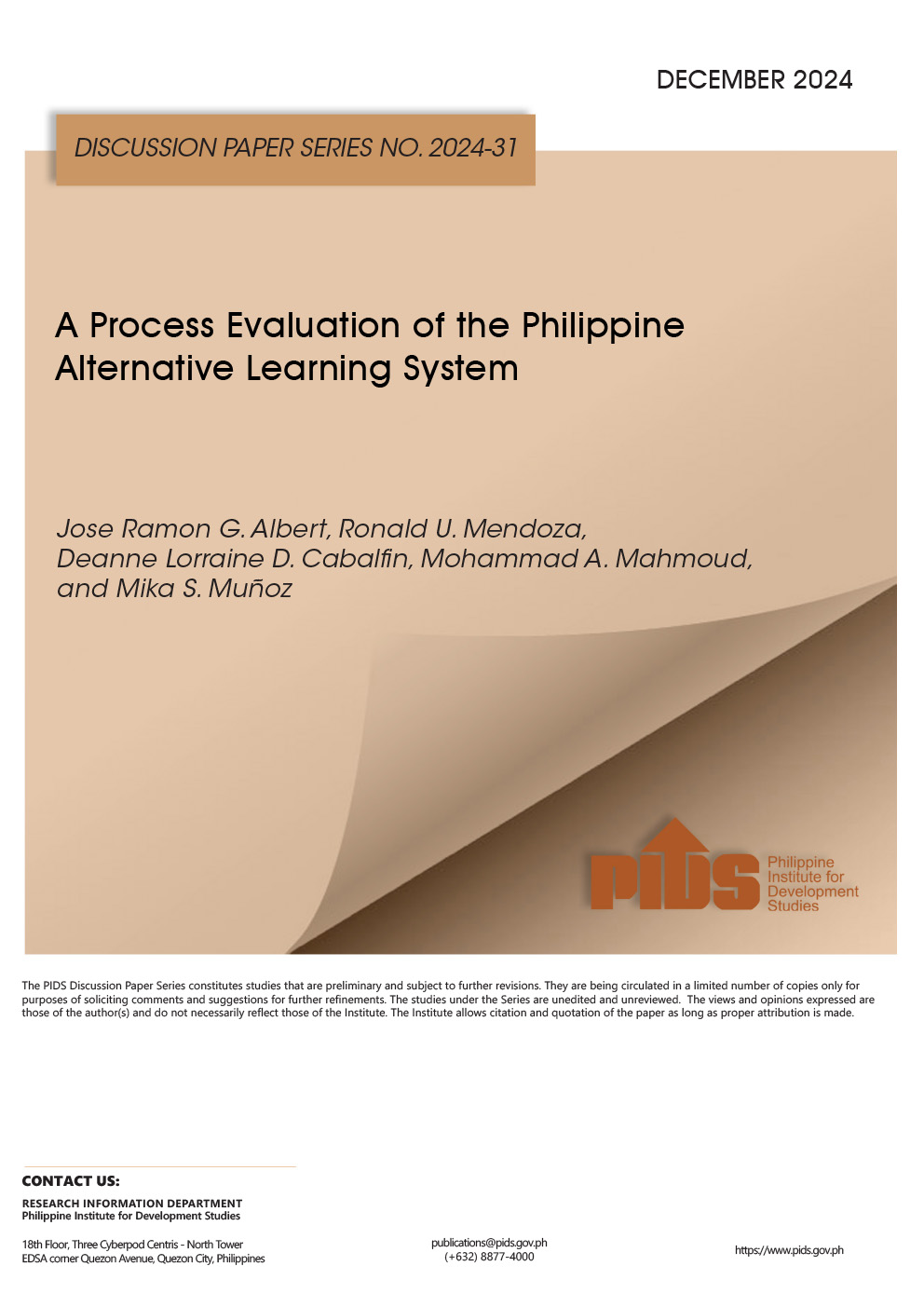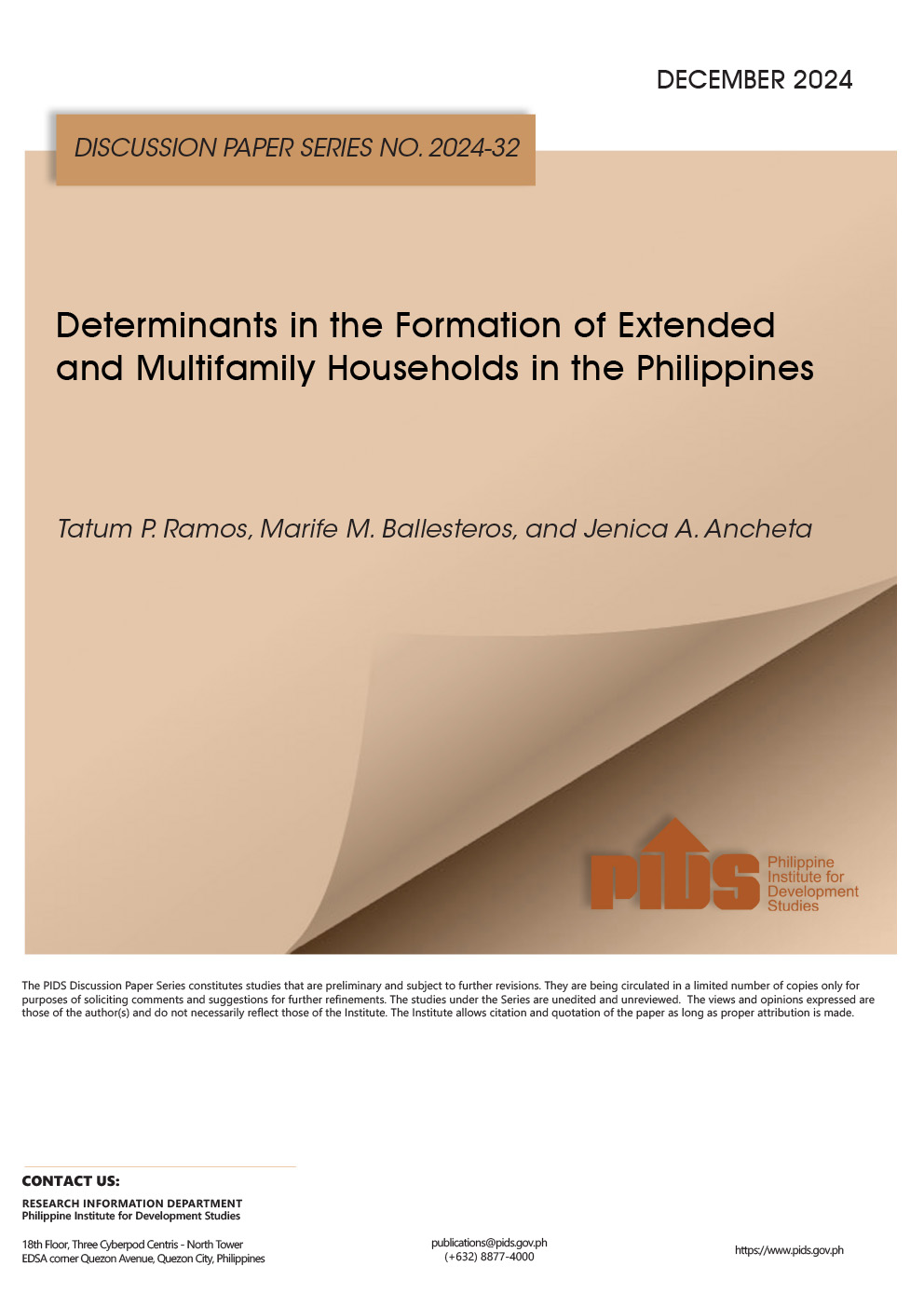This paper draws lessons from international practices to determine the feasibility of developing mortgage-backed securitization (MBS) to expand housing finance to the underserved market in the country. Despite the risks of securitization, as evidenced by the recent US subprime crisis, the huge beneficial effects of opening up the capital market to individual investors and to borrowers that were previously out of reach is well-acknowledged in literature. Several countries developed MBS to facilitate and promote housing finance. The international best practices show that efficient securitization can be established based on: (1) clear regulatory framework; (2) prudent underwriting and valuation process; (3) reliable credit rating companies to mitigate moral hazards and adverse selection risks; and (4) the need for originators to have adequate capital so that warranties and representations can be taken seriously. In particular, the US subprime crisis highlights a major lesson that needs to be avoided, that is, the use of securitization as a tool for balance sheet arbitrage instead of funding and investments in the real economy.
In the country, the National Home Mortgage Corporation (NHMFC) was established with the same intent as the US Fannie Mae and Freddie Mac. However, after three decades of existence, it was only in 2007 that NHMFC laid the building blocks to operate as a secondary mortgage institution (SMI). The corporation`s initial securitization issuances were successful and twice oversubscribed. However, to enable NHMFC to efficiently function as an SMI, government needs to undertake the following: (1) strengthen the housing finance industry and rationalize the role of HGC, HDMF, and NHMFC; (2) support NHMFC to improve its balance sheet and strengthen its organizational capabilities; (3) develop standardized housing loan documents and quality underwriting through mortgage insurance; (4) integrate/create credit information data base for all housing loan borrowers; (5) provide incentives to securitization through tax exemptions, reactivation of NHMFC limited sovereign guarantee, recognition of MBS bonds and NHMFC issuances as compliance to statutory liquidity requirements of financial institutions, etc; and (6) automation of MBS servicing and reporting.













